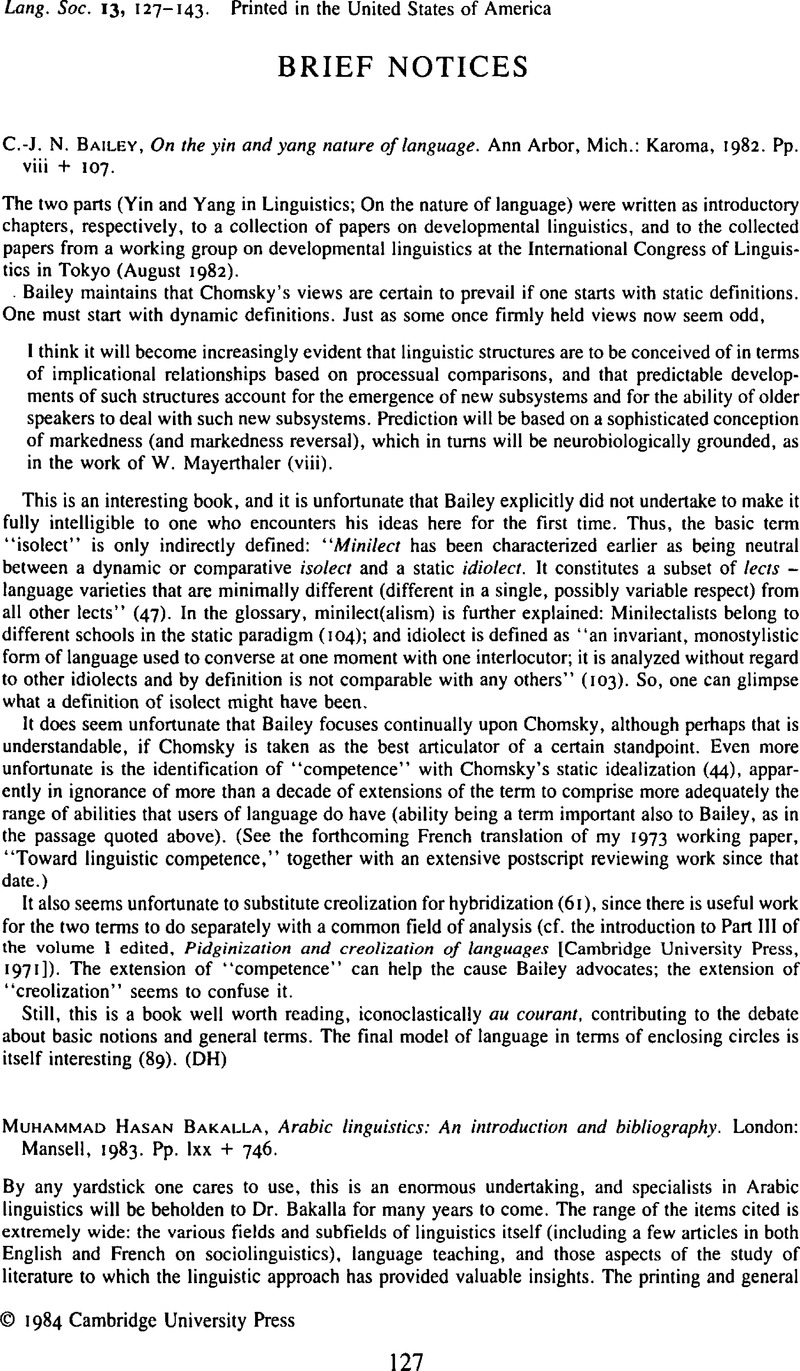No CrossRef data available.
Article contents
Brief notices/Publications received
Published online by Cambridge University Press: 18 December 2008
Abstract
An abstract is not available for this content so a preview has been provided. Please use the Get access link above for information on how to access this content.

- Type
- Brief notices/Publications received
- Information
- Copyright
- Copyright © Cambridge University Press 1984
References
REFERENCES
Garvin, Paul L. (ed. and trans.) (1964). A Prague School reader on esthetics, literary structure, and style. Washington, D. C.: Georgetown University Press.Google Scholar
Hyrnes, D. (1966). Two types of linguistic relativity. In Bright, W. (ed.), Sociolinguistics. The Hague: Mouton.Google Scholar
Hyrnes, D. (1967). Models of the interaction of language and social setting. Journal of Social Issues 23(2):8–28.Google Scholar
Hyrnes, D. (1972). Models of the interaction of language and social life. In Gumperz, J. & Hyrnes, D. (eds.), Directions in Sociolinguistics: The ethnography of communication. New York: Holt, Rinehart & Winston. 35–71.Google Scholar
Lindfors, B., & Owomoyela, O. (1973). Yoruba proverbs: Translation and annotation. (Papers in International Studies, Africa. Series No. 17.) Athens, Ohio: Ohio University Center for International Studies.Google Scholar
Mieder, W. (1982). International proverb scholarship: An annotated bibliography. (Garland Folklore Bibliographies, Volume 3) New York: Garland.Google Scholar


